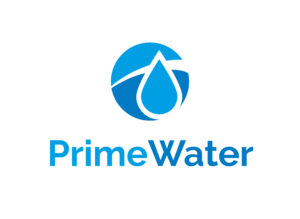An introduction to PrimeWater (H2020)
I have recently attended a workshop with water professionals. The participants from around the world, represented different sectors from our profession, from environmental protection to the water resources management, as well as potable water production, emergency response, hydropower production and aquaculture. From each other, we heard about the water challenges that several sectors are currently facing, i.e. algal bloom, increased turbidity, water scarcity as well as flooding. There was a general agreement that having information ahead of time can guarantee a prompt response when facing these challenges if not even prevent them from happening.
For instance, in Ottawa County in Canada, satellite data is used to detect and forecast harmful algal bloom (HABs) in Lake Erie so as to advise residents which part of the lake is safe for recreation. The early detection and rapid response as well as adaptive planning are critical in proactively determining and mitigating water hazards.
For those dealing with water, from water treatment plants to hydropower to aquaculture, adapting to risks in a planned manner is far more efficient than reacting to a major system failure. At the same time, being able to predict and respond in advance can improve environmental performance while lowering costs. This can be through modelling of highly complex, dynamic systems to provide forecasting of water quality and quantity and can guide water professionals in making quick and data-informed decisions, achieving regulatory compliance at low cost and improve the day-to-day performance.
Such approaches in forecasting are being used to support better tasting and safer drinking water. Earlier this year in July, the potential presence of toxic algae in the water in Cheney State Park in Kansas, USA, obliged the shut down its swim beaches. These algae also negatively affects the taste and smell of tap water. Being able to predict algal blooms means that the water company can proactively increase ozone treatment to improve the taste and smell of the water.
Combining expertise from Europe, Australia and the United States, the EU project PrimeWater aims to make inland water quality information derived from Earth Observation (EO) or satellite technologies more accessible and useable across the water sector over the course of the three years – from the end of 2019.
How is this done? Advanced algorithms integrate multi- and hyper-spectral imagery from satellite, airborne and ground-based sensors. Using data assimilation and Machine Learning techniques, PrimeWater aims to improve the accuracy of hydro-ecological forecasts at different spatial and time scales, which can then be used in decision making.
The project has a unique angle as it is connecting the scientific community with stakeholders who can benefit from having water quality forecast such as those dealing with potable water production, recreation, hydropower, aquaculture, environmental protection, water resources management and emergency planning. To make sure that the outputs are useful for these stakeholders, representatives have been invited to be part of a Multi User Panel to actively engage in the co-design, co-creation and co-evaluation process of intelligent EO-enabled water services. In addition, a Virtual Lab environment has been developed which allows sharing of datasets, experimental protocols and methods.
EMVIS Consultant Engineers (Greece) (the lead organization) and partners through PrimeWater are trying to understand the social and institutional factors in the water industry that drive adoption of new approaches such as water quality forecasting. This is being done using behavioral analysis methods which can direct a stronger uptake of innovative approaches. The intent is to have an operational web-based platform which can provide different water users with continuous monitoring of critical environmental parameters such as turbidity and algal blooms, as well as produce forecasted water quality characteristics in reservoirs and lakes.
The International Water Association is a key partner in PrimeWater leading the dissemination activities of the project as well as engaging stakeholders and coordinating a Community of Practice. EMVIS as well as the rest of the PrimeWater consortium finds in IWA a valuable network to access the needs of water professionals who can share challenges and work together towards efficient solutions. A key advantage of the IWA network is that it provides well-organized views, experiences, perspectives to a strong database of professionals’ requirements, and is a platform where members can bridge new science to the requirements of various water users.
For example, to ensure continued sharing of information and experience in the area of EO for Water Management beyond the lifetime of the project, a Community of Practice (CoP) spearheaded by IWA will bring together end-users, scientists, regulators and innovators. EMVIS intends to continue to reach out through IWA with PrimeWater and other initiatives as a key approach to communication and disseminating leading edge scientific knowledge.
About EMVIS Consultant Engineers:
EMVIS Consultant Engineers S.A. is a private company, actively involved in the field of Water Resources and Environment Management, through design studies, advisory work and research.
EMVIS is an IWA Corporate member since 2007. IWA Corporate membership enables companies or organisations to deliver world class water solutions, qualifying and elevating their staff’s expertise as water professionals and to be part of a worldwide network. To learn more about how to become an IWA corporate member visit here.


